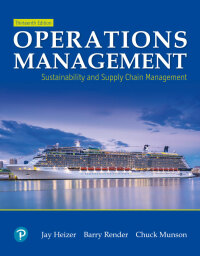2. What are the major differences in site location for a restaurant versus a retail store versus...
Question:
2. What are the major differences in site location for a restaurant versus a retail store versus a manufacturing plant?
From its first Red Lobster in 1968, the chain has grown to 705 locations, with over $2.6 billion in U.S. sales annually. The casual dining market may be crowded, with competitors such as Chili’s, Ruby Tuesday, Applebee’s, TGI Friday’s, and Outback, but Red Lobster’s continuing success means the chain thinks there is still plenty of room to grow. Robert Reiner, director of market development, is charged with identifying the sites that will maximize new store sales without cannibalizing sales at the existing Red Lobster locations.
Characteristics for identifying a good site have not changed in 40 years; they still include real estate prices, customer age, competition, ethnicity, income, family size, population density, nearby hotels, and buying behavior, to name just a few. What has changed is the powerful software that allows Reiner to analyze a new site in 5 minutes, as opposed to the 8 hours he spent just a few years ago.
Red Lobster has partnered with MapInfo Corp., whose geographic information system (GIS) contains a powerful module for analyzing a trade area (see the discussion of GIS in the chapter).
With the U.S. geo-coded down to the individual block, MapInfo allows Reiner to create a psychographic profile of existing and potential Red Lobster trade areas. “We can now target areas with greatest sales potential,” says Reiner.
Step by Step Answer:

Operations Management: Sustainability And Supply Chain Management
ISBN: 9780135225899,9780135202722
13th Edition
Authors: Jay Heizer; Barry Render; Chuck Munson





